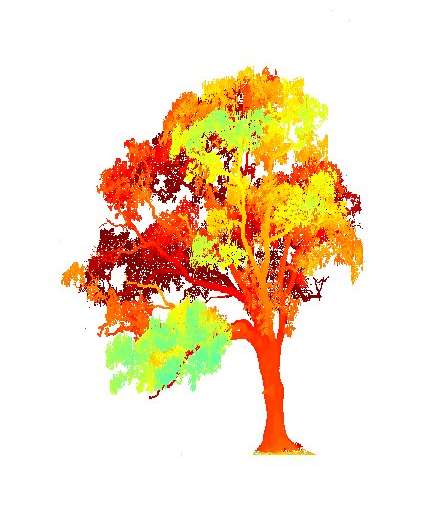Lasers revolutionise mapping of forests

New laser scanning technologies developed at the University of Salford are being used to map forests in more detail than ever before.
The technology could help give earlier and better data on the impacts of climate change on nature.
In two new papers published this week by the Royal Society, researchers at Salford, UK Forest Research and the Universities of York St John, University College London, Newcastle and Tampere, Finland, described the impacts of terrestrial laser scanners on mapping plant life.
Mark Danson, professor of geography at the University of Salford said: "Climate change has led to earlier spring growth in forests in many part of the world but measuring the amount of leaves present in a forest canopy through time is currently almost impossible.
"Our research is testing new methods to map three-dimensional leaf growth in forests, so that rather than rely on an 'observer' spotting growth in a forest on a given day, we can map the spatial and temporal changes in leaf development remotely."
Prof Danson has developed the Salford Advanced Laser Canopy Analyser (SALCA), the first operational scanner capable of distinguishing between leaf and wood and also capable of creating three-dimensional maps of leaf distribution for both single trees and complete forest stands.
The approach promises to revolutionise the measurement of leaf dynamics in forests providing key information that can be related to climate change.
To check the accuracy of leaf maps, the team counted the leaves on three large oak trees in Hampshire, and estimated their weight and total area.
In this paper, three dimensional models of the same three trees were then derived from scans acquired in 'leaf-off' condition and 'virtual' leaves added to these trees in the same proportions as the measured leaves. The virtual 'leaf-on' tree was then compared with the distribution of leaves derived from manual sampling and found to correspond very well.
Measuring the leaf area manually took fifteen volunteers three whole days; the laser scanner reconstruction took just a few hours.
Prof Danson added: "Rapid and accurate measurements of the spring growth of leaves in forests will be key to understanding the link between climate change and vegetation growth, and these Royal Society papers confirm the vital role that laser scanners will play in understanding and monitoring these environmental changes ."
The two papers are part of a special issue of the Royal Society's interdisciplinary journal Interface Focus. The issue "The terrestrial laser scanning revolution in forest ecology" was the result of a Royal Society Theo Murphy Scientific meeting held last year and organised by Professor Danson and colleagues. The issue has eleven papers from a stellar line-up of world-leading researchers in the field and the work described is likely to have a deep impact of the developing applications of laser scanning in forest ecology.
More information: F. Mark Danson et al. The terrestrial laser scanning revolution in forest ecology, Interface Focus (2018). DOI: 10.1098/rsfs.2018.0001
Provided by University of Salford




















